 |
 |
 |
| |
How Different Are Invisible and Visible Disabilities in HIV?
Over 60 functioning Very Limited - Important Report:
mental & physical limitations in Aging HIV+
|
| |
| |
from Jules an important finding is that HIV+ over 60 had lower rates of invisible disabilities (mood mental etc) although still very prevalent but they has higher rates of visible disabilities which were actual physical functioning demonstrating that after 60 the full impact of severe limitations to functioning is very impacted. Authors RECOMMEND: "behavioural and rehabilitative interventions" are needed.
Reported by Jules Levin
9th HIV and Aging Workshop 2018 Sept 13-14 NYC
Mehmet Inceer*, Marie-Josée Brouillette, Lesley K. Fellows, Nancy E. Mayo for the Positive Health Now investigatorsBrain
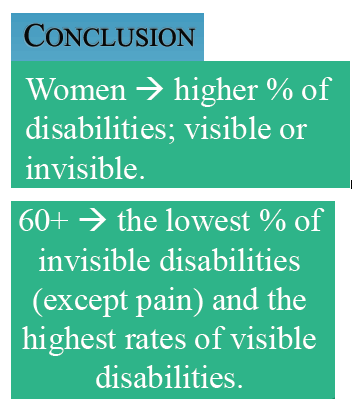
Program abstract, i updated the percentages from the poster which is below
How Different Are Invisible and Visible Disabilities in HIV?
Inceer M1, Brouillette M1, Fellows L1, Mayo N1
1Mcgill University, Montreal, Canada
Background: HIV infection has evolved from an infectious disease to a chronic disease in the post-cART era. As people with HIV live into their senior years, they accumulate health challenges both from aging and from HIV. The typical manifestations of chronic diseases in older persons are under-studied in HIV. Disability is one of the results of aging and of living with a chronic disease, but these disabilities are not always visible.
Objective: The specific objective is to estimate the prevalence of impairments, activity limitations, and participation restrictions in people living with HIV and the effect of age and sex on these disabilities.
Methods: The data came from the Positive Brain Health Now study, a Canadian cohort of older people living with HIV. The BHN cohort was fully characterized on measures under the framework of the International Classification of Functioning, Disability, and Health model (ICF). Specific ICF model variables included physical, emotional, and cognitive impairments, capacity and performance in everyday activities, participation in usual activities and expected life roles, as well as personal and environmental factors. Binary indicators of these disabilities were generated based on self-reported problems and logistic regression was used to assess the contribution of age and sex to the frequency of disability.
Results: A total of 858 men and women (723 men, 135 women) were enrolled in the Brain Health Now study. The mean age of the men was 53.3 (SD:8.3) and the women was 50.5 (SD:7.5) years.
The prevalence of invisible disabilities (pain, fatigue, low mood, negative body image, low self-esteem, low sleep quality, and cognitive problems) ranged from 15% (negative body image) to 95% (any memory concerns). Other prevalent invisible disabilities were planning and organization challenges (50-85%), symptoms of depression and anxiety (38%), fatigue (32%), and pain (32%).
The prevalence of more visible disabilities (related to physical capacity, engagement in physical activities and usual roles) ranged from 4% to 12% (limitations in self-care activities) to over 42% for restrictions in social activities and over 66% for performing physically demanding activities. Of moderate level activities, the highest prevalence of disability was seen for climbing several flights of stairs (47%), bending, kneeling, or stooping (38% to 50%), lifting and carrying (20 to 50%).
The only significant differences in prevalence across age groups was for the oldest group, 60+, who had the lowest rates of invisible disabilities (other than pain) and the highest rates of visible disabilities. Women reported higher rates of disabilities, invisible or visible, than men.
Discussion: Although HIV is now a health condition that can be managed, disabilities remain prevalent and invisible disabilities are common. Regular screening for these invisible disabilities is warranted as they may not come to attention without direct query. The most prevalent visible disabilities are those related to more strenuous activities and indicate that the HIV population may be at risk for future disability arising from inactivity. As most of the disabilities are actionable, behavioural and rehabilitative interventions should be considered as part of front-line therapy to change this disability profile.
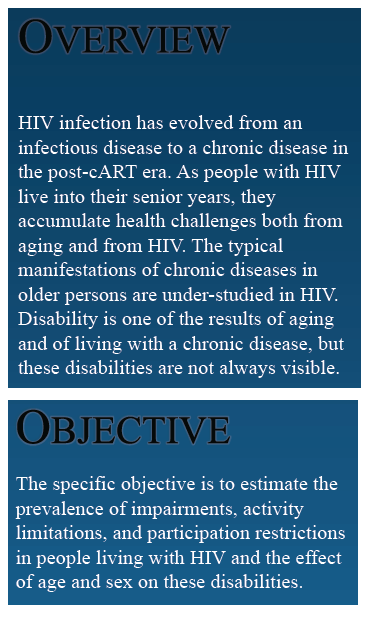
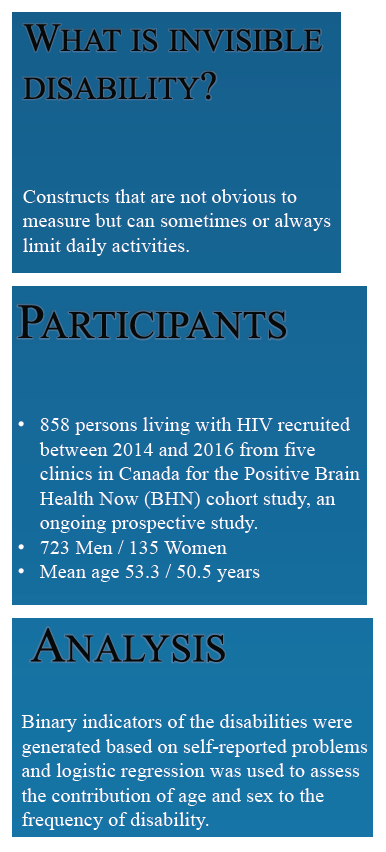
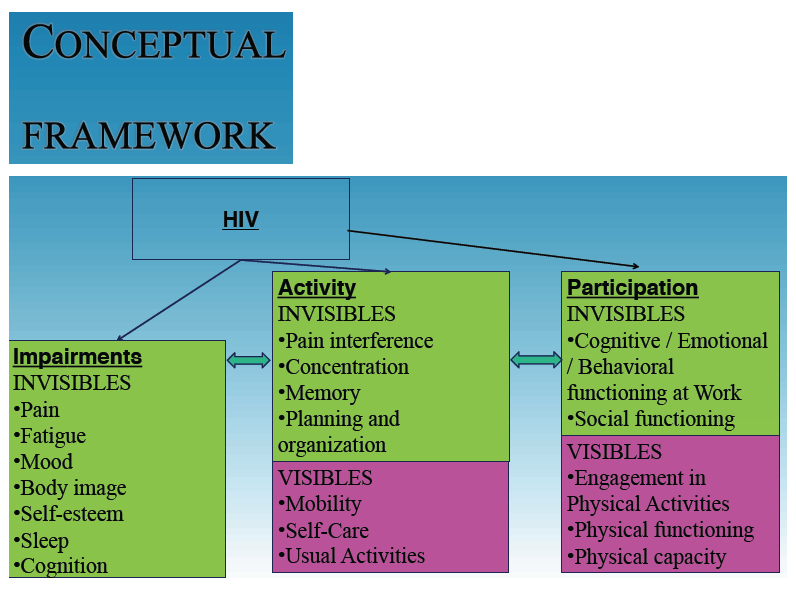
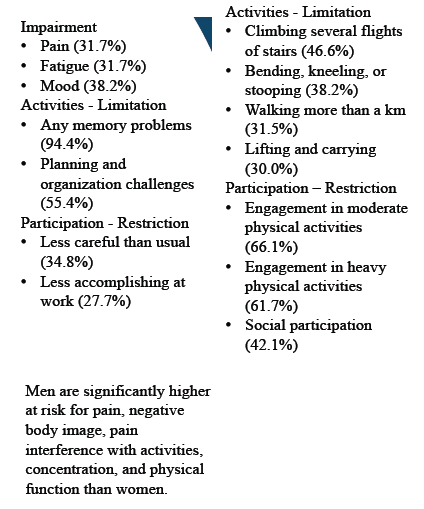
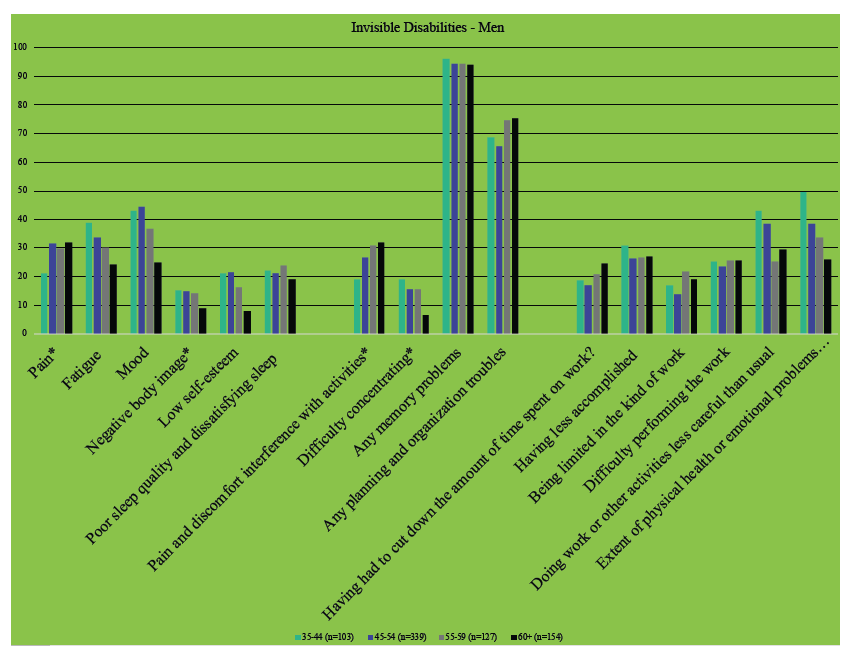
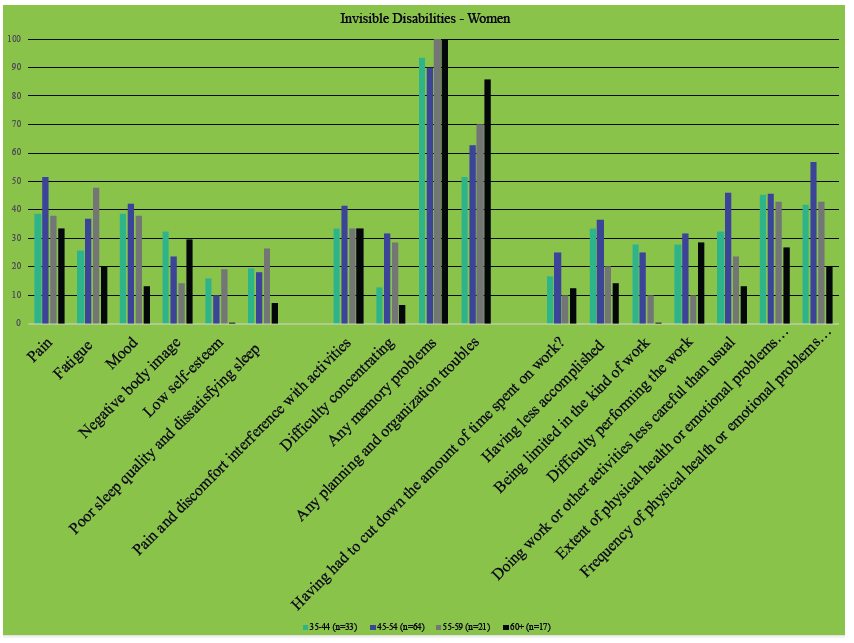
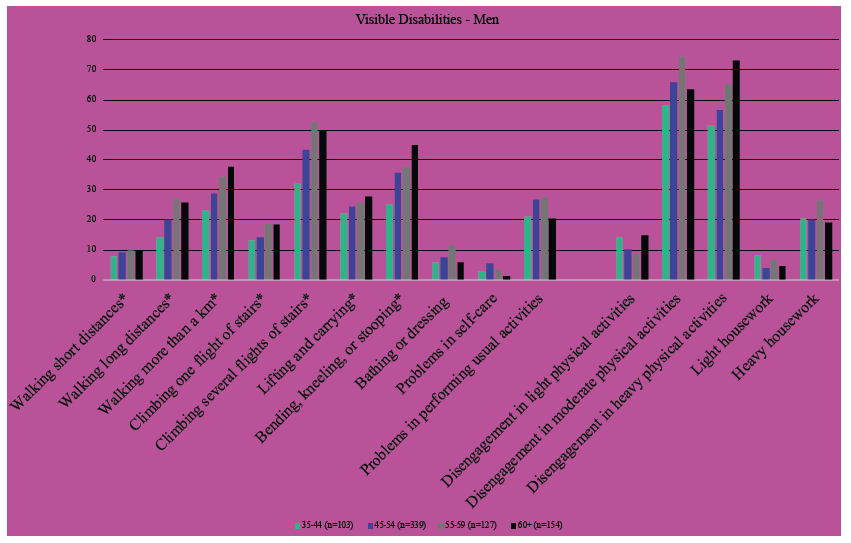

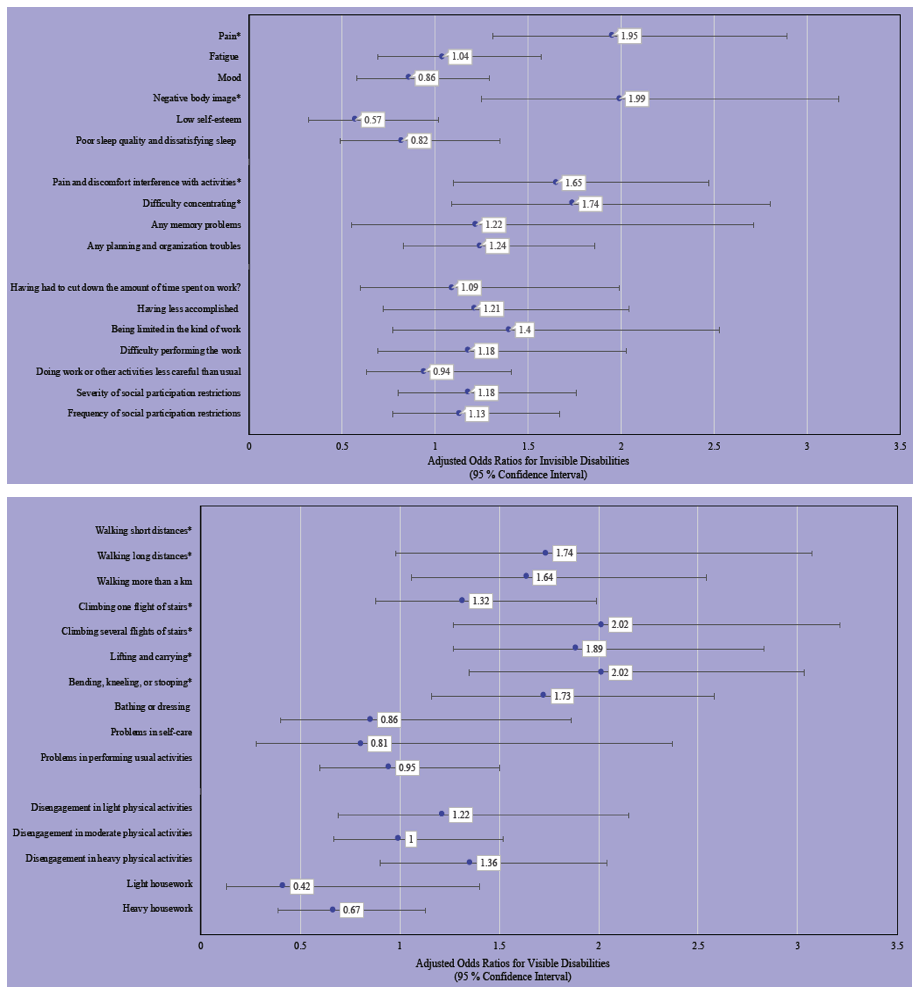
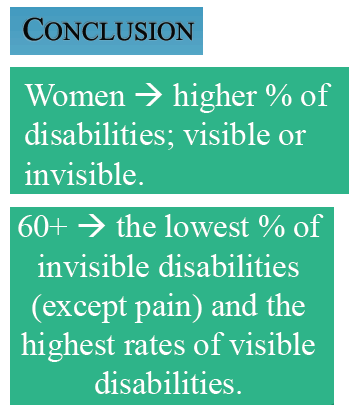
|
| |
|
 |
 |
|
|